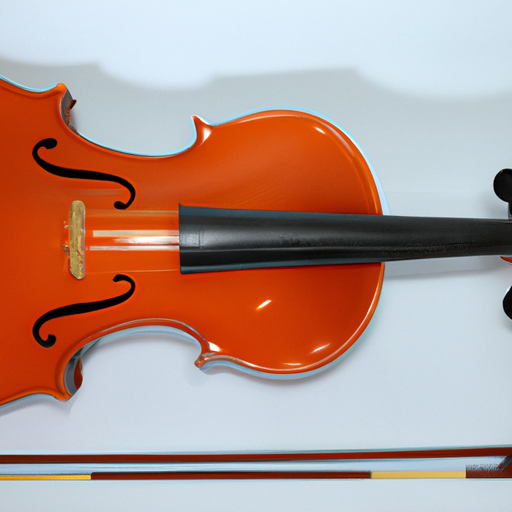
Introduction

A beginner violin is specifically designed for those who are new to playing the violin. These violins are often smaller in size, easier to play, and more affordable than professional violins. They are crafted with the needs of beginners in mind, offering a balance between playability and sound quality.

Choosing the right violin is crucial for beginners as it can greatly impact their learning experience and progress. A well-suited beginner violin will have the right size, comfortable playability, and produce a good sound quality. A poorly chosen violin can lead to frustration, discomfort, and hinder the development of proper technique.
When selecting a beginner violin, there are several key factors to consider:
Beginner violins are available in a wide range of prices. It is important to set a budget and stick to it. While it is tempting to go for the cheapest option, it is advisable to invest a little more to ensure better quality and playability.
Violins come in various sizes, and it is crucial to choose the correct size for the player. A violin that is too large or too small can lead to discomfort and difficulties in playing. Beginners should consult with a teacher or violin specialist to determine the appropriate size.
Reputable brands have a track record of producing reliable and high-quality instruments. It is beneficial to choose a beginner violin from a well-known brand as they often have better craftsmanship and customer support.
The material and overall quality of the violin greatly influence its sound and durability. Beginner violins are commonly made of spruce or maple, with solid wood construction being preferable over laminated wood. The fittings and accessories, such as the chinrest and pegs, should also be of good quality.
Here are some recommendations for beginner violins in different price ranges:
One option in this price range is the Luom Lat Tin Do Day Violin. It offers decent playability and sound quality for beginners on a budget.
In this price range, the Yamaha AV5 Student Violin and the Mendini MV200 Violin are popular options. These violins offer better craftsmanship and sound quality compared to entry-level models.
For those willing to invest a bit more, the Cecilio CVN-500 and the Stentor 1500 Violin are highly recommended. These violins provide a significant upgrade in sound and craftsmanship, suitable for more serious beginners.
If budget is not a constraint, the Yamaha AV10 Violin and the Mendini MV500 Violin are excellent choices. These violins offer superior sound quality and craftsmanship, making them suitable for advanced beginners.
Several brands are widely recognized for their beginner violins:
Yamaha is renowned for producing high-quality musical instruments, including violins. Their beginner models are reliable and offer consistent performance.
Mendini violins are popular among beginners due to their affordability and decent quality. They offer a range of options to suit different budgets.
Cecilio is known for offering affordable yet well-crafted violins. Their beginner models provide good sound quality and playability.
Stentor violins have a long-standing reputation for producing reliable instruments. They offer a range of beginner models that are highly regarded by teachers and students alike.
There are several key differences between beginner violins and professional violins:
Professional violins are crafted with the finest materials and meticulous attention to detail, resulting in a superior sound quality. They often produce a richer, more resonant tone compared to beginner violins.
Beginner violins are designed for beginners to learn and develop their skills. Once a player reaches an intermediate or advanced level, it is recommended to upgrade to a professional violin to fully explore their potential.
Before making a purchase, beginners should consider the following factors when testing a violin:
Play various notes and listen for a balanced, clear sound. A good violin should produce a pleasing tone across the strings.
Hold the violin and assess its weight and balance. It should feel comfortable and well-balanced in your hands. Check if the chinrest is positioned correctly for your chin.
Try playing different techniques, such as scales and bowing exercises, to assess the violin's playability. It should respond well to your touch and feel easy to play.
When purchasing a beginner violin, avoid these common mistakes:
While the aesthetic appeal of a violin is important, it should not be the sole factor in the decision-making process. Focus on the overall quality and sound of the instrument.
Choosing the wrong size violin can lead to discomfort and difficulties in playing. Make sure to consult with a teacher or violin specialist to determine the proper size.
Investing in a well-crafted beginner violin will result in better playability and sound quality. Avoid settling for the cheapest option without considering its overall quality.
Proper maintenance and care are essential for the longevity and performance of a beginner violin. Here are some important aspects to keep in mind:
Regularly tune your violin to ensure it produces the correct pitch. Clean the instrument carefully using a soft cloth to remove rosin buildup on the strings and body.
Store your violin in a protective case when not in use to prevent damage. Avoid exposing it to extreme temperatures or humidity, as it can affect the instrument's wood and sound quality.
Here are some common questions beginners have about beginner violins:
While it is technically possible for a beginner to use a professional violin, it is not recommended. Professional violins require a certain level of skill and technique to fully appreciate their capabilities. It is advisable to start with a beginner violin and progress to a professional one as you improve.
Yes, left-handed individuals can play a regular violin. The orientation of the violin is not dependent on hand dominance. However, some left-handed players may choose to restring the violin to accommodate their playing style.
The right size violin should allow you to comfortably reach all positions on the fingerboard while maintaining proper posture. Consulting with a teacher or violin specialist is the best way to determine the appropriate size for your body.
Choosing the right beginner violin is crucial for a positive learning experience. Consider factors such as price range, size, brand reputation, and material quality. Test the violin for sound quality, comfort, and playability before making a purchase. Avoid common mistakes and prioritize proper maintenance and care. With the right violin, beginners can embark on their musical journey with confidence and enjoyment.